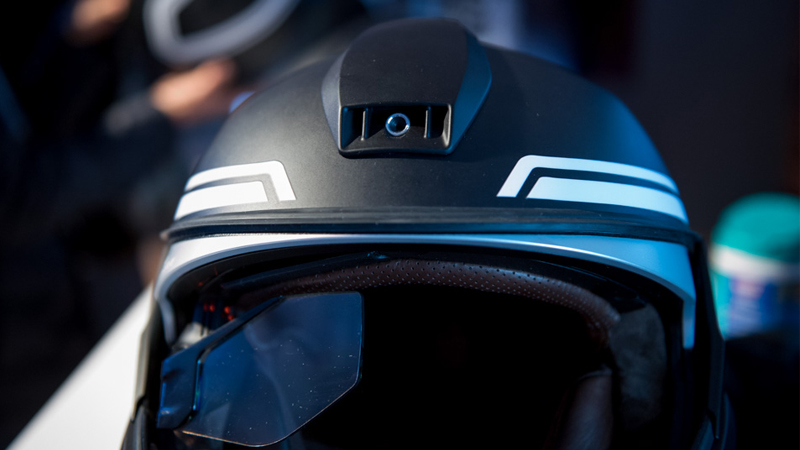The Future of Helmets: Innovations You Need to Know
Helmets have been around for centuries, serving as essential protective gear for various activities, from sports to motorcycling to industrial work. However, as technology evolves, so too does the design and functionality of helmets. The future of helmets is shaping up to be smarter, safer, and more comfortable, thanks to cutting-edge innovations. In this article, we’ll explore the latest advancements in helmet technology and how these innovations are transforming the way we think about head protection.

1. Smart Helmets with Integrated Technology
One of the most exciting developments in helmet technology is the rise of smart helmets. These helmets are equipped with integrated sensors and electronics that enhance safety, communication, and comfort. For example, many smart helmets now include Bluetooth connectivity, allowing riders to listen to music, take phone calls, or communicate with others without needing to remove their helmet. Some advanced models also feature voice-activated controls, reducing the need for manual adjustments while on the move.
Another key innovation is the integration of augmented reality (AR) displays. With AR helmets, users can access real-time data, such as navigation directions, speed, and even health metrics, directly on the helmet’s visor or through a heads-up display. These features are particularly useful for motorcyclists, cyclists, and even construction workers, allowing them to stay connected while keeping their hands free.
2. Improved Safety Features with MIPS Technology
The importance of safety in helmet design cannot be overstated, and innovations such as MIPS (Multi-directional Impact Protection System) technology are revolutionizing the way helmets protect the head. MIPS is a brain protection system that helps reduce rotational forces that occur during an impact, significantly decreasing the risk of brain injury.
Helmets with MIPS technology feature a slip-plane system inside the helmet that allows the outer shell to rotate independently from the inner liner during an impact. This helps to absorb the rotational energy, which is crucial in reducing the risk of serious head injuries. Many high-performance helmets for motorcycling, cycling, and snow sports are now incorporating MIPS, making them safer than ever before.
3. Lightweight and Impact-Resistant Materials
Another exciting area of helmet innovation is the development of lightweight yet durable materials that improve both comfort and safety. Traditional helmets were often bulky and heavy, which could cause discomfort, especially during long periods of wear. However, advancements in materials science have led to the creation of helmets made from carbon fiber, Kevlar, and expanded polystyrene (EPS), which are both lighter and stronger.
Carbon fiber helmets, in particular, are becoming increasingly popular due to their high strength-to-weight ratio. These helmets provide excellent protection while remaining much lighter than their traditional counterparts. Additionally, the use of advanced polymers and foam materials helps to enhance impact resistance, ensuring that the helmet absorbs and disperses energy effectively during a collision.
4. Customizable Fit with 3D Printing and Adaptive Padding
A major concern for many helmet users is the fit, as a poorly fitting helmet can compromise safety and comfort. The future of helmets addresses this with customizable fit technologies. One of the most exciting developments is the use of 3D printing to create helmets that are perfectly tailored to an individual’s head shape. This technology allows for precision manufacturing, creating helmets with a better fit and more effective protection.
In addition, adaptive padding systems are being incorporated into helmets to ensure a more comfortable and secure fit. These padding systems can adjust based on the shape of the wearer’s head, providing optimal cushioning and reducing pressure points. This means that helmets will not only fit better but also provide enhanced comfort, even during long hours of use.
5. Environmental Sustainability in Helmet Production
As sustainability becomes a key concern across industries, the helmet market is also embracing more eco-friendly materials and production methods. Companies are increasingly using recyclable materials, such as bio-based plastics and plant-derived fibers, to create helmets that have a lower environmental impact.
Some manufacturers are also focusing on carbon-neutral production processes, ensuring that the carbon footprint of making the helmets is minimized. By prioritizing sustainability, helmet manufacturers are helping to reduce waste and pollution while still delivering high-quality, protective gear.
6. Helmet Airbags for Enhanced Protection
One of the most groundbreaking innovations in helmet safety is the development of helmet airbags. These airbags are designed to deploy during an impact, offering an additional layer of protection for the head and neck. Typically seen in motorcycling, airbag helmets use sensors to detect sudden deceleration or impact forces, triggering the deployment of airbag cushions.
This technology is still in the early stages but is gaining traction, especially in high-risk activities like motorcycling, skiing, and cycling. The added protection provided by airbag helmets could significantly reduce the severity of injuries, particularly in cases of high-speed accidents.
7. Helmet Design for Comfort and Performance
Comfort and performance are paramount in helmet design, and future innovations are focused on optimizing both. One of the most important features being improved is ventilation. Advanced airflow systems are being incorporated into helmets to prevent overheating and ensure that the wearer remains cool and comfortable, even in hot or strenuous conditions.
Additionally, anti-fog and anti-scratch visors are becoming standard on many helmets, improving visibility and ensuring that the helmet remains functional in all weather conditions. These features are especially important for athletes who wear helmets for long periods, such as motorcyclists, cyclists, and snow sports enthusiasts.
8. Helmet Monitoring and Health Tracking
As helmets become smarter, they are also incorporating health monitoring features. Some high-tech helmets are now capable of tracking vital signs such as heart rate, body temperature, and even brain activity. This data can be used to assess the wearer’s physical condition and alert them if they’re at risk of injury due to fatigue or other factors.
For instance, some helmets designed for sports like cycling and skiing feature impact sensors that can detect the severity of a crash and send alerts to emergency contacts or medical professionals. This could prove invaluable in the event of an accident, providing immediate information about the wearer’s condition and potentially saving lives.

9. Future Prospects: Helmets in Autonomous Vehicles
Looking further into the future, helmets could play a role in autonomous vehicles. As self-driving cars and autonomous transportation systems become more prevalent, helmet technology could be adapted to protect passengers in these vehicles. Whether for enhanced head protection or integrated safety features, the future of helmets may extend far beyond sports and motorcycling.
Conclusion
The future of helmets is exciting and filled with innovative technologies that will redefine how we think about head protection. From smart helmets with AR displays and Bluetooth connectivity to airbag systems and eco-friendly materials, the next generation of helmets is set to deliver enhanced safety, comfort, and performance. Whether you’re a motorcyclist, cyclist, skier, or construction worker, these innovations will make your helmet smarter, safer, and more comfortable than ever before. As technology continues to advance, we can expect even more breakthroughs that will make helmets an even more essential part of our daily lives.


